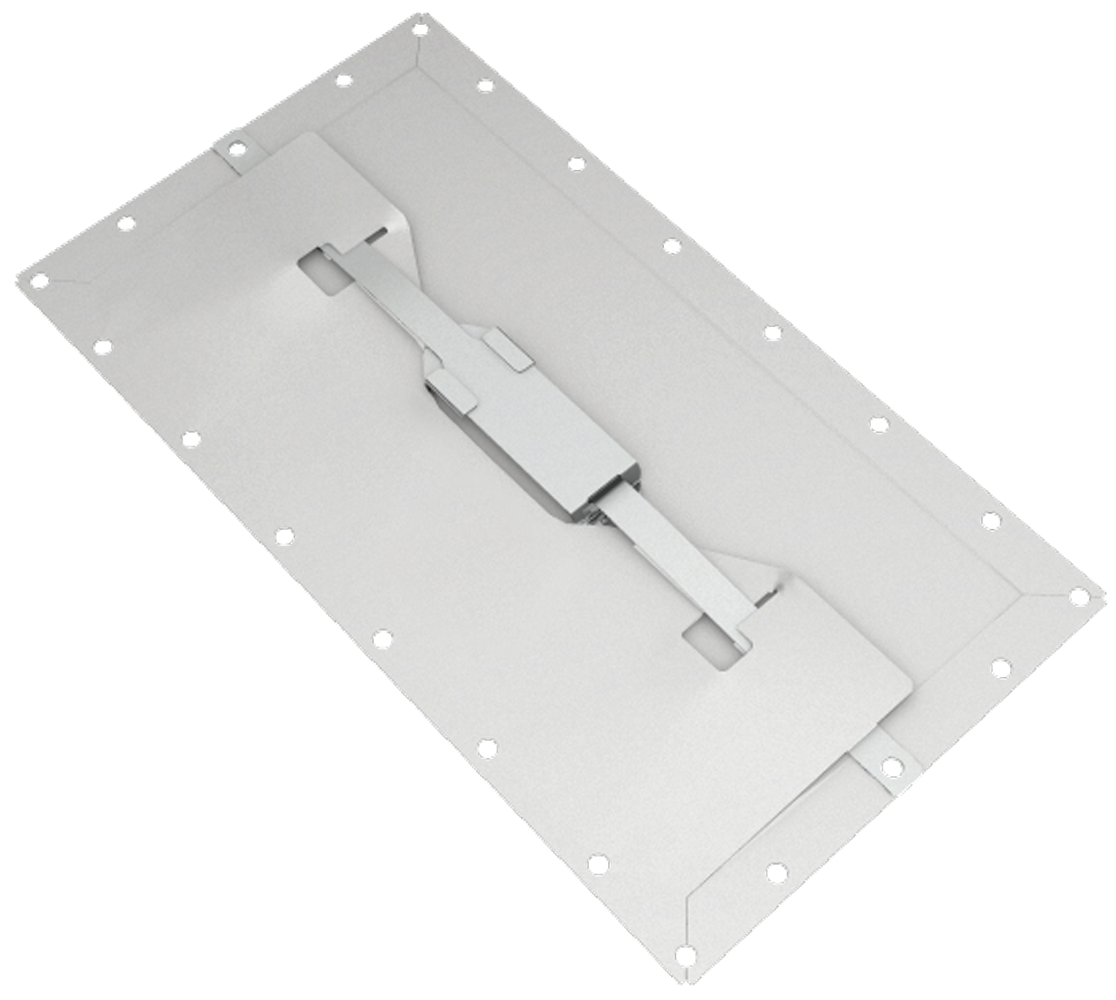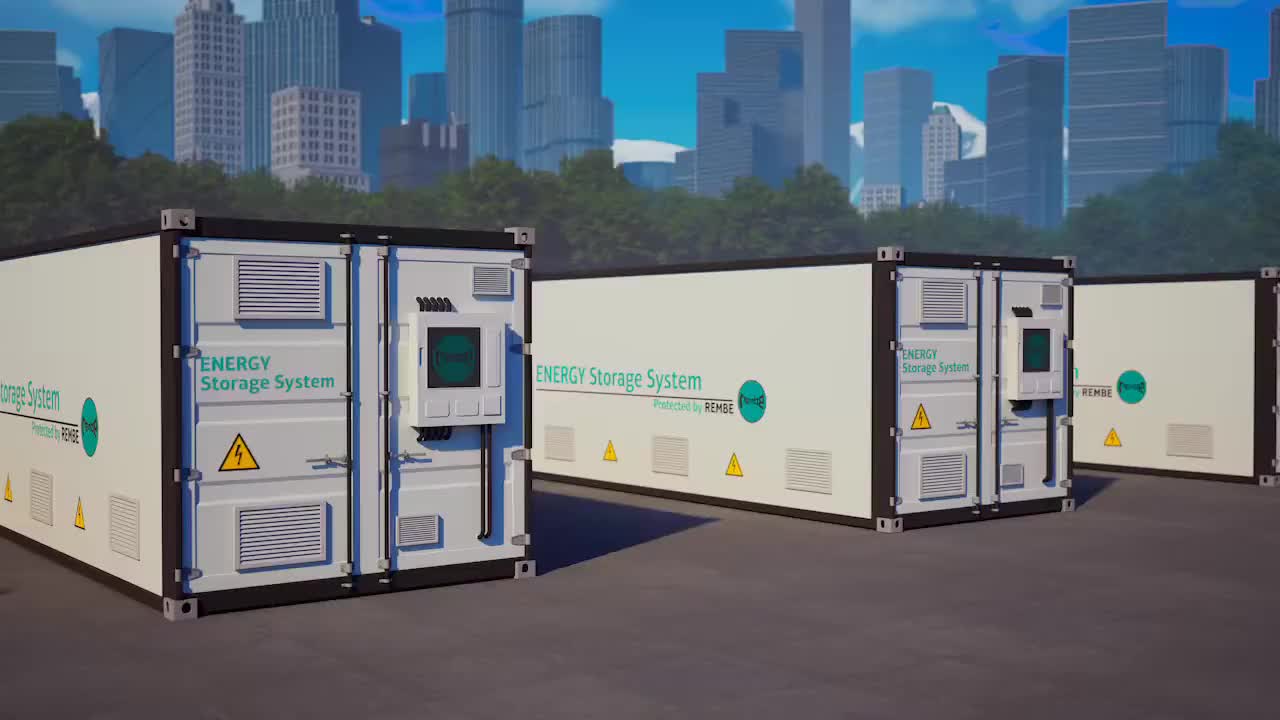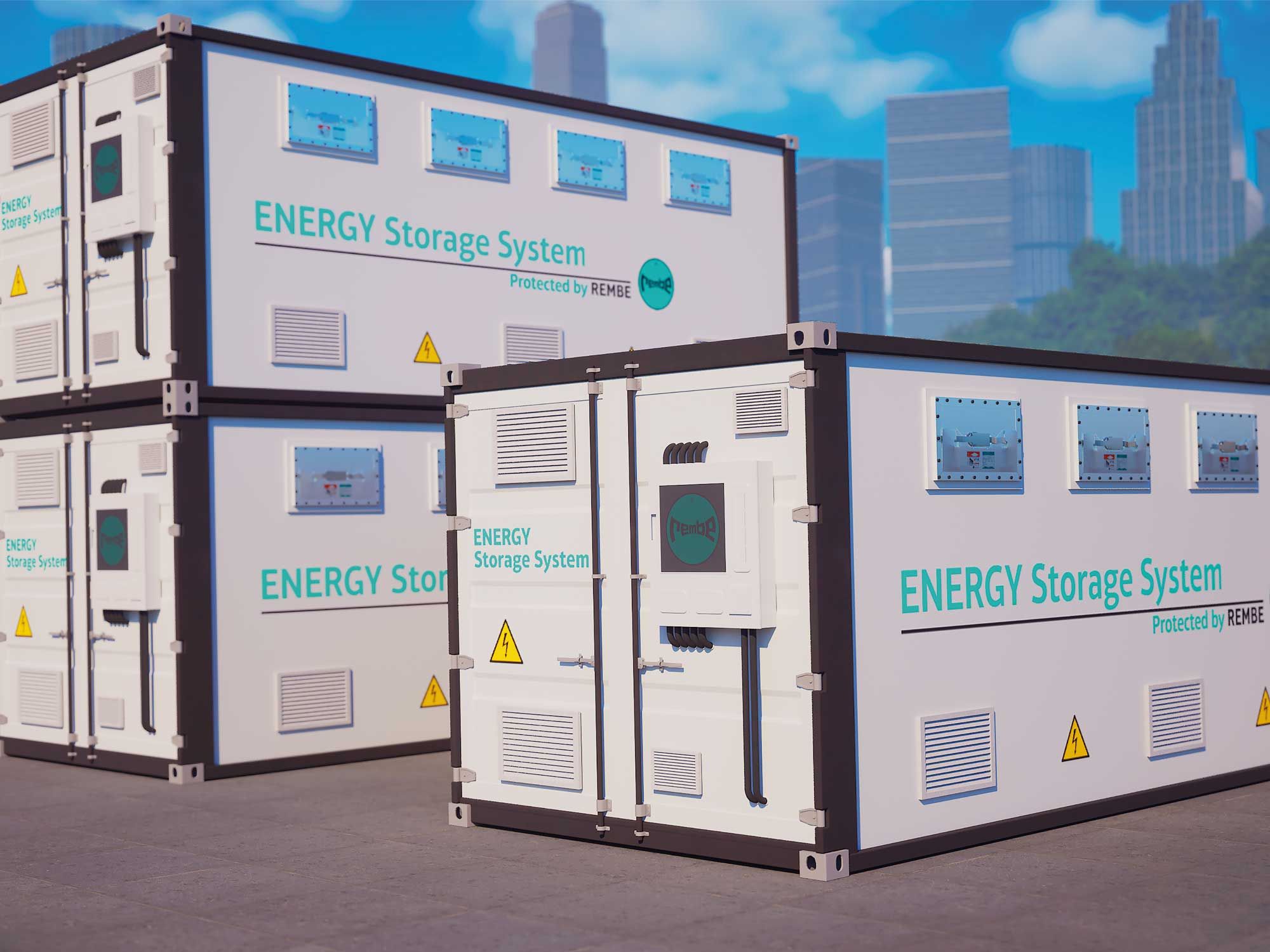BESS.TGV
Deflagrations must always be vented to a safe location. Conventional deflagration vents can therefore only be installed on the roof of a BESS, venting the deflagration upwards. The revolutionary BESS.TGV by contrast can be installed on a BESS side wall, as it deflects the deflagration upwards by limiting the opening angle of the vent panel.
By decreasing the size of dangerous areas, BESS.TGV helps you to reduce your safety areas to a minimum and increase usable operating space while providing optimum protection against explosions.

deflagration venting
for ultimate flexibility.
Application
BESS.TGV helps BESS designers move beyond conventional deflagration venting through the roof, and towards more flexible design opportunities while meeting safety requirements. It eliminates concerns with roof venting such as snow loads and hail impact, and frees up valuable roof area. Container stacking is made possible.

Module to reduce hazardous areas.
Explosion vent for BESS
Mechanism
BESS.TGV limits the opening angle of the explosion vent and guides the explosion pressure wave, flames and heat into defined areas. This minimises the size of the safety areas required.
Product parameters
| Burst pressure Pstat | 25-500 mbar |
| Max. permitted operating pressure | 50 % of Pstat |
| Temperature | –40 to +180°C (–40 to +356°F) |
| Material | Stainless steel |
| Gasket material | FDA approved silicon gasket |
| Tolerance | ± 20 % at standard burst pressure |
| Recommended torque for M10 screws | 20 Nm |
| Insulation | FEF |
| Fire rating of insulation | UL 94 V 0 |
| Insulation properties | λ= 0.035 W/m*K |
| Opening angle | 45° |
Our specialists will be pleased to assist you in finding a solution that matches your specific operating conditions.

Meets the requirements of NFPA 68
SIL-Equivalent
SIL 4



